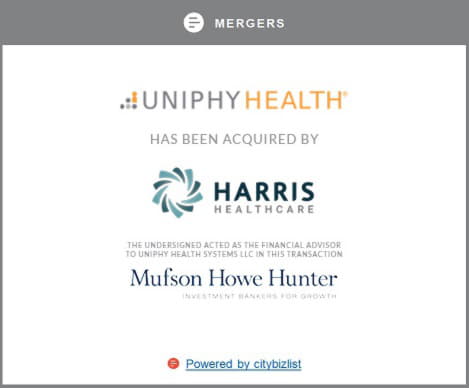BEDMINSTER, N.J. and DUBLIN, Ireland, May 02, 2018 (GLOBE NEWSWIRE) -- Amarin Corporation plc (NASDAQ:AMRN), a biopharmaceutical company focused on the commercialization and development of therapeutics to improve cardiovascular health, today announced financial results for the three months ended March 31, 2018, and provided an update on company operations.
Key Amarin achievements through March 31, 2018 include:
- R&D progress: The REDUCE-IT cardiovascular outcomes study, designed to provide data to support a significantly expanded market opportunity for Vascepa® (icosapent ethyl), is estimated to have reached the 100% mark for onset of the 1,612 target primary major adverse cardiovascular events (MACE) specified in the study design. Amarin anticipates that MACE from the study will be adjudicated through Q2 2018, consistent with the company's objective of reporting top-line results from this important study before the end of Q3 2018.
- U.S. revenue growth: Recognized $43.8 million in net product revenue from Vascepa sales in Q1 2018 compared to $34.3 million in Q1 2017, an increase of 27%.
- U.S. prescription growth: Increased normalized prescriptions for Vascepa by 25% and 27% compared to Q1 2017 based on data from Symphony Health Solutions and IQVIA, respectively.
- International development: Announced the first international approval for Vascepa with the regulatory approval of Vascepa in Lebanon. The clinical trial of Vascepa for approval in China is in process.
- Cash balance: As of March 31, 2018, Amarin had a cash balance of $129.0 million, which includes approximately $70.0 million in net cash proceeds from the equity offering announced in February 2018, compared to $73.6 million at December 31, 2017.
“There is tremendous energy and excitement within Amarin currently as we approach the results of the REDUCE-IT study and prepare for targeted future growth,” stated John F. Thero, president and chief executive officer. “The unmet medical need remains large for cost-effective therapies that lower cardiovascular risk beyond the risk reduction achieved with standard of care statin therapy alone. We are pleased that increasing numbers of physicians are prescribing Vascepa to help their patients and we are confident that the results from the REDUCE-IT study will lead to better informed decisions regarding patient care.”
REDUCE-IT Cardiovascular Outcomes Study
REDUCE-IT is designed to determine if intervention with 4 grams/day of prescription pure EPA Vascepa will lower rates of major adverse cardiovascular events in statin-treated patients with persistent hypertriglyceridemia and other cardiovascular risk factors. Motivated by the vision of Amarin and its scientific collaborators in identifying a large unmet medical need in this important patient population, and facilitated by the differentiation of Vascepa from earlier generation triglyceride-lowering therapies, this is the first ever prospective study of this population with any therapy.
The primary endpoint of this global, double-blind study is the time to the first occurrence of a composite of primary major adverse cardiovascular events (MACE). Results will be compared between the Vascepa and placebo groups. The study was designed to accumulate 1,612 MACE at which level the study was robustly designed to have 90% power to detect a 15% relative risk reduction in MACE between the Vascepa and placebo arms of the study. The study is being conducted under a Special Protocol Assessment (SPA) agreement with the FDA.
As previously reported, Amarin estimates that the onset of approximately 1,612 MACE has occurred. In March 2018, patients in the study began to complete their final clinical site visits, a key step towards study completion.
Amarin is intentionally blinded to the results of the study and will remain blinded to such results until after the study is completed and the database is locked. Final patient visits will be followed by completing data entry for the more than 35,000 patient years of study in REDUCE-IT, and typical database quality control measures, known as cleaning. In parallel, adjudication will be completed for all MACE which occurred during the study, including adjudication for certain events which, per protocol, cannot be finally adjudicated until patients complete their final site visit and results are available from certain non-invasive diagnostic testing conducted during such site visits. These steps will be followed by the database lock and final efficacy and safety analyses, including analysis of the trial's primary endpoint of first MACE events in the study, and the analyses of more than thirty pre-defined secondary and tertiary endpoints. Winding down a study of this magnitude to completion typically takes many months. The company believes that it is on track to achieve its objective of reporting top-line results from this important study before the end of Q3 2018.
Financial Update
Net product revenue for the three months ended March 31, 2018 and 2017 was $43.8 million and $34.3 million, respectively. The increase in net product revenue was primarily attributable to increases in new and recurring prescriptions of Vascepa.
During the first quarter, based on data from Symphony Health Solutions and IQVIA, Amarin experienced continued prescription growth and increase in Vascepa market share, particularly among detailed physicians. These sources reported estimated normalized total Vascepa prescriptions of approximately 381,000 and 392,000, respectively, for the three months ended March 31, 2018, representing growth of approximately 25% and 27%, respectively, over levels reported for the first three months of the prior year.
The company recognized licensing revenue of $0.1 million and $0.3 million in the three months ended March 31, 2018 and 2017, respectively, related to agreements for the commercialization of Vascepa outside the United States.
Cost of goods sold for the three months ended March 31, 2018 and 2017 was $10.6 million and $8.2 million, respectively. Gross margin on net product revenue was 76% for each of the three months ended March 31, 2018 and 2017.
Selling, general and administrative expenses in the three months ended March 31, 2018 and 2017 were $43.4 million and $34.2 million, respectively. This increase is due primarily to increased promotional activities, including commercial spend for anticipated expansion following successful REDUCE-IT results, and increased co-promotion fees, including an accrual for co-promotion tail payments as well as an increase in co-promotion fees calculated on increased gross margin resulting from higher net product revenue. The tail co-promotion fees, which are calculated as a percentage of the 2018 co-promotion fee, are payable in 2019 through 2021. Such tail co-promotion fees will be accrued throughout 2018.
Research and development expenses in the three months ended March 31, 2018 and 2017 were $11.8 million and $10.8 million, respectively. This increase in expense was primarily driven by the timing of REDUCE-IT and related costs.
Under U.S. GAAP, Amarin reported a net loss of $24.1 million in the first quarter of 2018, or basic and diluted loss per share of $0.08. This net loss included $3.8 million in non-cash stock-based compensation expense. Amarin reported a net loss of $20.9 million in the first quarter of 2017, or basic and diluted loss per share of $0.08. This net loss included $3.4 million in non-cash stock-based compensation expense.
Excluding non-cash gains or losses for stock-based compensation, non-GAAP adjusted net loss was $20.3 million for the first quarter of 2018, or non-GAAP adjusted basic and diluted loss per share of $0.07, compared to non-GAAP adjusted net loss of $17.6 million for the first quarter of 2017, or non-GAAP adjusted basic and diluted loss per share of $0.07.
Amarin reported cash and cash equivalents of $129.0 million as of March 31, 2018. Excluding proceeds from the equity financing completed in the first quarter and excluding other financing-related amounts (interest and royalty) and without the company’s high level of research and development payments, most of which relates to advancing the REDUCE-IT study to completion this year, net cash outflow in the quarter ended March 31, 2018 was approximately $0.1 million. Cash outflows relating to research and development in Q1 2018 totaled approximately $11.3 million and cash paid for interest and royalties, in aggregate, was approximately $5.9 million.
As of March 31, 2018, the company had $39.2 million in net accounts receivable ($57.6 million in gross accounts receivable before allowances and reserves) and $35.1 million in inventory.
As of March 31, 2018, Amarin had approximately 293.6 million American Depository Shares (ADSs) and ordinary shares outstanding, 32.8 million common share equivalents of Series A Convertible Preferred Shares outstanding and approximately 25.7 million equivalent shares underlying stock options at a weighted-average exercise price of $3.35, as well as 12.4 million equivalent shares underlying restricted or deferred stock units.
Amarin’s partner in the Middle East and North Africa, or MENA region, in the first quarter of 2018 obtained approval for Vascepa in Lebanon. Amarin anticipates additional approvals in the MENA region, including potential additional approvals in 2018. Amarin’s partner for China, Eddingpharm, is progressing in its clinical study of Vascepa in China. This study, which recently commenced, potentially positions Vascepa to be the first prescription grade EPA product to receive drug approval in China.
Use of non-GAAP adjusted financial information
Included in this press release are non-GAAP adjusted financial information as defined by U.S. Securities and Exchange Commission Regulation G. The GAAP financial measure most directly comparable to each non-GAAP adjusted financial measure used or discussed, and a reconciliation of the differences between each non-GAAP adjusted financial measure and the comparable GAAP financial measure, is included in this press release after the condensed consolidated financial statements.
Non-GAAP adjusted net loss was derived by taking GAAP net loss and adjusting it for non-cash stock-based compensation expense. Management uses these non-GAAP adjusted financial measures for internal reporting and forecasting purposes, when publicly providing its business outlook, to evaluate the company’s performance and to evaluate and compensate the company’s executives. The company has provided these non-GAAP financial measures in addition to GAAP financial results because it believes that these non-GAAP adjusted financial measures provide investors with a better understanding of the company’s historical results from its core business operations.
While management believes that these non-GAAP adjusted financial measures provide useful supplemental information to investors regarding the underlying performance of the company’s business operations, investors are reminded to consider these non-GAAP measures in addition to, and not as a substitute for, financial performance measures prepared in accordance with GAAP. Non-GAAP measures have limitations in that they do not reflect all of the amounts associated with the company’s results of operations as determined in accordance with GAAP. In addition, it should be noted that these non-GAAP financial measures may be different from non-GAAP measures used by other companies, and management may utilize other measures to illustrate performance in the future.
About Amarin
Amarin Corporation plc is a biopharmaceutical company focused on the commercialization and development of therapeutics to improve cardiovascular health. Amarin's product development program leverages its extensive experience in lipid science and the potential therapeutic benefits of polyunsaturated fatty acids. Vascepa® (icosapent ethyl), Amarin's first FDA-approved product, is a highly-pure, omega-3 fatty acid product available by prescription. For more information about Vascepa visit www.vascepa.com. For more information about Amarin visit www.amarincorp.com.
About REDUCE-IT
Amarin's clinical development program for Vascepa includes a trial known as the REDUCE-IT cardiovascular outcomes study, an 8,175-patient study commenced in 2011. REDUCE-IT is the first multinational cardiovascular outcomes study evaluating the effect of prescription pure EPA therapy, or any triglyceride-lowering therapy, as an add-on to statins in patients with high cardiovascular risk who, despite stable statin therapy, have elevated triglyceride levels (150-499 mg/dL). A large portion of the male and female patients enrolled in this outcomes study are anticipated to also be diagnosed with type 2 diabetes. As reported previously, Amarin expects to announce top-line results of this important study before the end of Q3 2018. The REDUCE-IT trial is being conducted under a Special Protocol Assessment agreement with the U.S. Food and Drug Administration.
Additional information on clinical studies of Vascepa can be found at www.clinicaltrials.gov.
About VASCEPA® (icosapent ethyl) capsules
Vascepa® (icosapent ethyl) capsules are a single-molecule prescription product consisting of the omega-3 acid commonly known as EPA in ethyl-ester form. Vascepa is not fish oil, but is derived from fish through a stringent and complex FDA-regulated manufacturing process designed to effectively eliminate impurities and isolate and protect the single molecule active ingredient. Vascepa, known in scientific literature as AMR101, has been designated a new chemical entity by the FDA. Amarin has been issued multiple patents internationally based on the unique clinical profile of Vascepa, including the drug’s ability to lower triglyceride levels in relevant patient populations without raising LDL-cholesterol levels.
FDA-approved indication and usage
- Vascepa (icosapent ethyl) is indicated as an adjunct to diet to reduce triglyceride (TG) levels in adult patients with severe (?500 mg/dL) hypertriglyceridemia.
- The effect of Vascepa on the risk for pancreatitis and cardiovascular mortality and morbidity in patients with severe hypertriglyceridemia has not been determined.
Important safety information for Vascepa
- Vascepa is contraindicated in patients with known hypersensitivity (e.g., anaphylactic reaction) to Vascepa or any of its components.
- Use with caution in patients with known hypersensitivity to fish and/or shellfish.
- The most common reported adverse reaction (incidence > 2% and greater than placebo) was arthralgia (2.3% for Vascepa, 1.0% for placebo). There was no reported adverse reaction > 3% and greater than placebo.
- Patients receiving treatment with Vascepa and other drugs affecting coagulation (e.g., anti-platelet agents) should be monitored periodically.
- In patients with hepatic impairment, monitor ALT and AST levels periodically during therapy.
- Patients should be advised to swallow Vascepa capsules whole; not to break open, crush, dissolve, or chew Vascepa.
- Adverse events and product complaints may be reported by calling 1-855-VASCEPA or the FDA at 1-800-FDA-1088.
FULL VASCEPA PRESCRIBING INFORMATION CAN BE FOUND AT WWW.VASCEPA.COM.
Vascepa has been approved for use by the United States Food and Drug Administration (FDA) as an adjunct to diet to reduce triglyceride levels in adult patients with severe (?500 mg/dL) hypertriglyceridemia. Nothing in this press release should be construed as promoting the use of Vascepa in any indication that has not been approved by the FDA.
About cardiovascular disease
Worldwide, cardiovascular disease (CVD) remains the #1 killer of men and women. In the United States, CVD leads to one in every three deaths – one death approximately every 38 seconds – with annual treatment cost in excess of $500 billion.1, 2
Beyond the cardiovascular risk associated with LDL-C, genetic, epidemiologic, clinical and real-world data suggest that patients with elevated triglycerides (TG) (fats in the blood), and TG-rich lipoproteins, are at increased risk for cardiovascular disease. 3, 4, 5, 6
Leading clinical investigations seeking to address cardiovascular risk reduction beyond lowering LDL-C focus on interrupting the atherosclerotic process (e.g., plaque formation and instability) by beneficially affecting other lipid, lipoprotein and inflammation biomarkers and cellular functions thought to be related to atherosclerosis and cardiovascular events.









